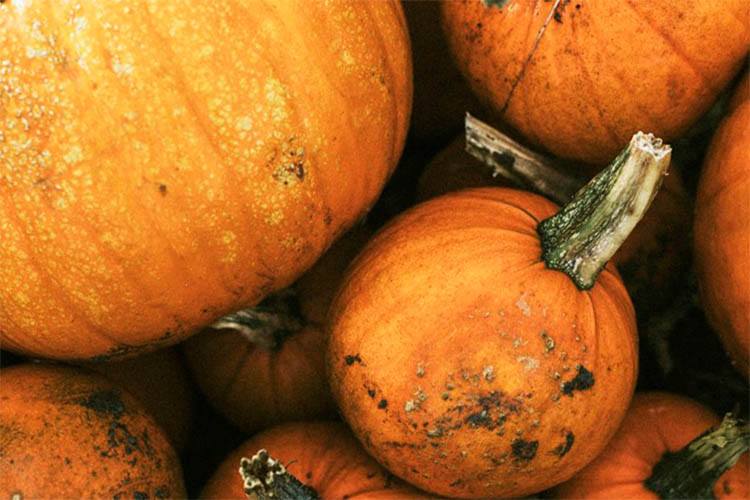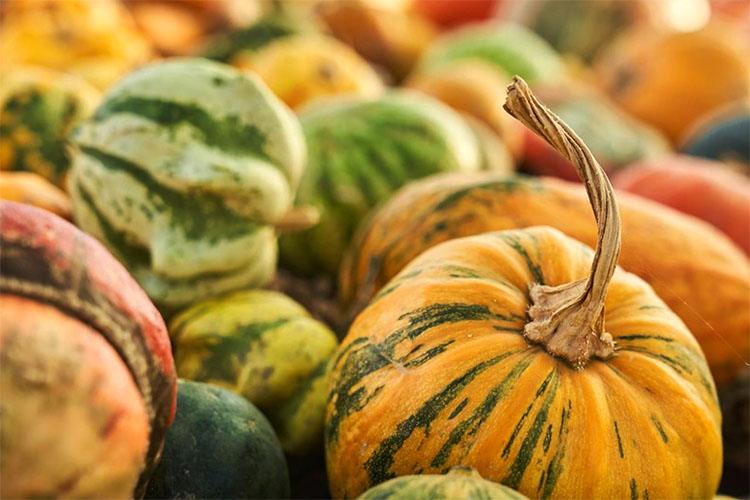‘Growing pumpkins can be a rewarding endeavor, but it all starts with using the best fertilizers for pumpkins to ensure they receive the proper nutrients.
Whether the objective is to create impressive giant Halloween displays or to cultivate delicious culinary varieties, a comprehensive understanding of the best fertilizers for pumpkins is crucial.
This guide examines the top five fertilizers specifically formulated for pumpkin growth, including organic options that enhance soil health.
Additionally, it addresses the essential nutrients necessary for optimal pumpkin development, as well as the appropriate timing and methods for applying these fertilizers. Furthermore, it explores natural alternatives to chemical fertilizers.
Prepare to cultivate your most successful pumpkin crop to date.
1. Organic compost
Using organic compost is essential for maintaining soil health and providing vital nutrients for pumpkin plants, making it one of the best fertilizers for pumpkins to thrive in nutrient-rich environments.
By integrating organic compost into the soil, gardeners can enhance nutrient absorption, improve soil structure, and foster the presence of beneficial microbes and earthworms that further enrich the growing medium.
Compost functions as a slow-release organic fertilizer, providing a balanced supply of nitrogen, phosphorus, and potassium to support the various growth stages of pumpkin plants, while also promoting sustainable farming practices in garden care.
The advantages of organic compost extend beyond the immediate provision of nutrients – it significantly enhances soil fertility and structure, facilitating improved drainage and root development.
To produce high-quality compost, one may begin by collecting kitchen scraps, such as vegetable peels and coffee grounds, in conjunction with yard waste like leaves and grass clippings.
When this mixture is appropriately balanced, it transforms into rich organic matter that not only improves soil moisture retention but also enhances aeration, creating an optimal environment for crop growth.
Specifically for pumpkin plants, the application of compost prior to planting can lead to increased yields, while its long-term utilization contributes to healthier soil, ultimately resulting in a more productive and sustainable vegetable garden overall.
2. Fish emulsion
Fish emulsion is a widely recognized liquid fertilizer celebrated for its nitrogen-rich composition, making it an excellent choice for promoting vigorous plant growth and optimizing nutrient availability during critical growth stages of pumpkin plants.
This natural fertilizer not only enhances nitrogen levels but also provides a range of micronutrients essential for achieving optimal crop yield.
The rapid absorption of these nutrients accelerates the growth process, resulting in healthier and more abundant pumpkins.
The application of fish emulsion is a straightforward process – it can be diluted with water and directly sprayed onto the foliage or incorporated into the soil during planting.
By strategically timing applications around the early growth phase and prior to flowering, growers can effectively enhance nutrient availability.
Incorporating this organic matter into the soil not only enhances moisture retention but also boosts microbial activity, creating a well-balanced ecosystem that supports overall plant health, making it one of the best fertilizers for pumpkins.
3. Bone Meal
Bone meal is a highly effective fertilizer that serves as a concentrated source of phosphorus, which is essential for promoting root development and enhancing nutrient absorption in pumpkin plants.
It’s crucial nutrient for vigorous pumpkin growth, ensuring substantial crop production. When included in the best fertilizers for pumpkins, it enhances flowering and fruit set, essential for cultivating healthy pumpkins.
Typically, the recommended application rate is approximately 1 to 2 cups per 10 square feet, although this should be adjusted based on specific soil test results.
This application rate can be compared to other fertilizers, such as synthetic options that may release nutrients too rapidly, or homemade varieties like compost, which often lack sufficient phosphorus.
By carefully selecting the appropriate balance and timing of bone meal in conjunction with other organic practices, gardeners can optimize soil fertility and promote the thriving growth of their pumpkin plants.
4. Blood meal

Blood meal serves as a highly effective nitrogen-rich fertilizer that significantly improves the crop yield of pumpkin plants by facilitating robust foliage growth and enhancing disease resistance through increased nutrient availability.
This natural amendment promptly delivers the essential nitrogen that seedlings require during their early growth stages, ensuring their vigorous development.
When integrated into the soil, blood meal acts more rapidly than slower-acting alternatives such as composted manure or synthetic fertilizers.
Vegetable gardeners recognize its effectiveness, particularly during critical phases of plant growth, as it contributes to overall health and productivity. It is crucial to apply blood meal judiciously, as excessive application can lead to nutrient imbalances.
Additionally, using blood meal as a soil amendment requires following best practices. Incorporate it into the top layer of soil and adjust your watering schedule to optimize nutrient uptake. This approach makes blood meal one of the best fertilizers for pumpkins, ensuring a thriving vegetable garden.
5. Seaweed extract
Seaweed extract is a highly versatile organic fertilizer, rich in essential plant nutrients and growth enhancers that improve soil health and promote the growth of pumpkin plants by fostering beneficial microbial activity.
This exceptional natural supplement not only enriches the soil but also significantly enhances nutrient absorption, making it an invaluable addition to any gardening regimen.
The trace elements present in seaweed are essential for the overall health of pumpkin plants, as they support various physiological functions critical for growth and development.
Applying seaweed extract during key growth stages, particularly during seedling establishment and flowering, can maximize its beneficial effects.
Amending the soil with blood meal requires following best practices, such as incorporating it into the top layer of soil and adjusting watering schedules. These steps optimize nutrient uptake, promoting a thriving vegetable garden. When looking for the best fertilizers for pumpkins, blood meal is an excellent choice to enhance growth and yield.
What nutrients do pumpkins need to thrive?
Pumpkin plants flourish when provided with a balanced array of essential nutrients, primarily nitrogen, phosphorus, and potassium, which are vital for their growth and development.
These nutrients play a significant role in various physiological functions, including photosynthesis, root development, and overall crop management.
Maintaining an appropriate nutrient balance is crucial to prevent deficiencies that may impede pumpkin growth and yield. Conducting soil tests before planting helps determine effective fertilization strategies, ensuring optimal nutrient availability throughout the growth stages. For the best fertilizers for pumpkins, these practices are essential to maximize growth and yield.
Each nutrient contributes distinctly to the plant’s health – for example, nitrogen is responsible for promoting lush foliage and vigorous growth, while phosphorus enhances root formation and flowering.
Potassium is essential for overall plant vitality, as it improves resistance to diseases and environmental stress.
Recognizing symptoms such as yellowing leaves, poor fruit set, or stunted growth can indicate specific nutrient deficiencies.
Addressing these deficiencies may involve the application of organic amendments, such as compost or bone meal, along with timely fertilizer applications, particularly during critical growth phases like pre-planting and early flowering.
By aligning nutrient delivery with the plant’s growth cycle, pumpkin growers can strengthen crop resilience and maximize yield potential.
How do these fertilizers benefit pumpkin growth?
The application of various fertilizers, including organic fertilizers such as compost and fish emulsion, yields significant benefits for pumpkin growth by enhancing nutrient absorption, improving soil health, and ultimately increasing crop yield.
By incorporating these organic options, gardeners can enrich the soil with essential nutrients vital for the robust growth of pumpkins.
For instance, compost not only provides a balanced range of nutrients but also enhances soil structure, facilitating improved water retention and aeration.
Fish emulsion, which is rich in nitrogen, promotes healthy leaf development, an essential factor as the plant matures. When these organic fertilizers are utilized in conjunction with synthetic options, such as balanced N-P-K fertilizers, the resulting synergy can be remarkable.
This combination ensures a continuous supply of nutrients throughout various growth stages, thereby optimizing the overall health and productivity of the pumpkin plants.
When should these fertilizers be applied?
The timing of fertilizer application is crucial for maximizing their effectiveness, particularly concerning seasonal planting and the specific nutrient requirements during the growth stages of pumpkin plants.
A well-structured fertilization schedule can significantly impact both the quantity and quality of the pumpkin harvest.
Initially, prior to planting, it is essential to enrich the soil by incorporating organic matter and foundational nutrients, such as compost or a balanced fertilizer.
As the planting date approaches, conducting a soil test becomes imperative, as it provides valuable insights into nutrient deficiencies and enables growers to customize their fertilization strategies accordingly.
Once the pumpkin plants are established, their nutrient requirements will evolve, necessitating the application of side-dressing fertilizers during their rapid growth phase.
This adjustment should also take into account local climate conditions, including rainfall and temperature variations.
Regular monitoring of plant health and soil nutrient levels is essential to ensure that these adjustments are effectively implemented, facilitating optimal growth.
How much fertilizer should be used for pumpkins?

Determining the appropriate amount of fertilizer for pumpkins necessitates careful analysis of soil pH, nutrient absorption rates, and the specific growth stages of the plants to optimize crop yield.
Incorporating soil testing results is essential, as these analyses provide critical data regarding existing nutrient levels and potential deficiencies within the field.
A comprehensive understanding of the unique requirements for macronutrients such as nitrogen, phosphorus, and potassium, in addition to micronutrients, will facilitate the tailored application of fertilizers to effectively support the pumpkins throughout their various growth phases.
The specific types of fertilizers—be they organic, slow-release, or synthetic—will also influence the rates of application.
To achieve balanced nourishment, it is imperative to calculate the nutrient content present in each type of fertilizer, ensuring that the total application aligns with the distinct needs of the pumpkins while mitigating the risk of over-fertilization.
Are there any natural alternatives to chemical fertilizers?
For gardeners interested in sustainable farming practices, there are numerous natural alternatives to chemical fertilizers, including homemade fertilizers and organic options such as compost, which can effectively support the growth of pumpkin plants while preserving soil health.
These methods not only nourish the plants but also contribute to a thriving ecosystem within the garden.
Combining kitchen scraps, grass clippings, and coffee grounds can create nutrient-rich fertilizers that improve soil structure and boost microbial activity. For more Learn more about decorating your kitchen, along with helpful tips and tricks, consider these sustainable practices.
Simple recipes for homemade plant food, like using banana peels for potassium or making comfrey tea for nitrogen, offer cost-effective solutions. These can be easily integrated into conventional gardening practices. When searching for the best fertilizers for pumpkins, these homemade options provide excellent nutrients to support healthy growth and abundant yields.
By adopting organic fertilizers, gardeners can reduce their environmental impact while promoting a more resilient garden ecosystem, ultimately leading to healthier plants and a more abundant harvest.
Scroll down to access our FAQ section on the page.





